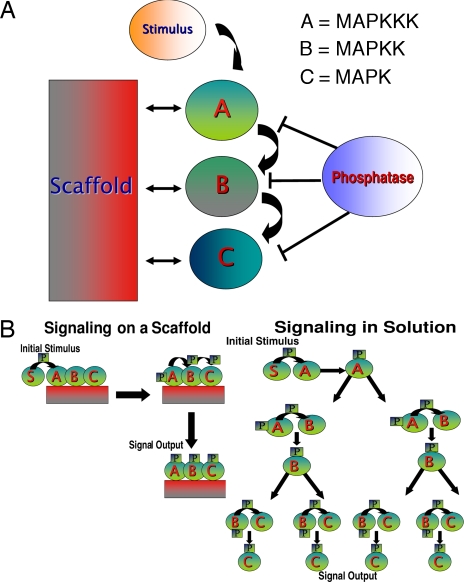Fig. 1.
Computer simulations model the effects of scaffolding a kinase cascade. (A) In a model kinase cascade such as the MAPK cascade, an initial stimulus, S* (e.g., Ras-GTP), is recruited to and activates kinase A (MAPKKK). An active A (MAPKKK) in turn activates a B kinase (MAPKK), which then can activate kinase C (MAPK). Phosphatases are present that can encounter and deactivate activated kinases. (B) Schematics are shown for the sequence of signaling events in solution and on a scaffold in our model. For a chemical reaction to occur in solution, the appropriate species must first come into contact with its substrate and then overcome a thermal energy barrier to model catalysis. When assembled on a scaffold, active kinases need only overcome the thermal energy barrier to activate their downstream target. Phosphatases are allowed to interact with active kinases that are bound to the scaffold. Excluding phosphatases from interacting with scaffold-bound proteins is also considered.

